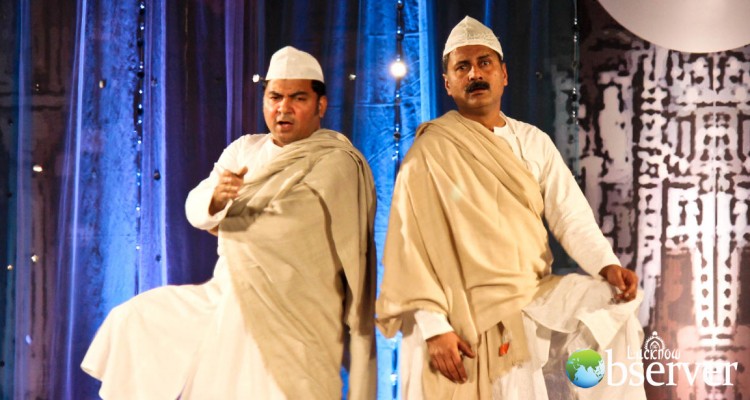Saira Mujtaba chats up Mahmood Farooqui, dastango famous for transporting listeners to the magical world of tilism.
Before there was paper and pen there was the word. And story tellers around the world make the most wonderful use of words. Before there was ink, the history and laws for the people were not written but memorized in long lyric poems recited by bards.
Oral storytelling continues to fascinate for it helps to create a magical rapport between storytellers and each one of their audience. What audiences seem to enjoy most is an unseen, unsaid connection created during the communal experience of telling stories.
The spontaneous art of story tellers and their dependence on the reaction and participation of the audience makes both teller and listener feel part of a powerful creative process.
That is why storytelling is still around despite paper, pen, ink, radio, cinema and computers. Although not as common as it was during the past, dastango like Farooqui are in the forefront of a recent movement to rescue the fascinating art form from the throes of death.
Excerpts from an interview with Farooqui:
We have learnt to enjoy the art of story telling for our ancestors who must have gathered around evening fires to expressed fears and fantasies through the spoken word. Mahmood Farooqui as writer, filmmaker and dastango- which one is dearest to you and why?
Dastangoi involves a lot of writing too so I like being a dastango the most because it allows me creative expression at two levels. First, to be able to compile a story and then to give life to it with my expressions.
What enthused you to write many dastan and become a dastango?
Mainly, I was deeply impressed, even astonished by the achievements of the Dastangos of the past. That they could write such beautiful, even breathtaking stories, then also perform them and sometimes spontaneously create some of these stories while performing, that took my breath away. That combined with the extraordinary scholarship of Shamsur Rahman Faruqi, who showed us this path was the main inspiration.
Were you apprehensive about the way people would respond to 200 year old stories?
I was and at the same time I was confident that the stories we were going to tell were unique, exciting and very funny. So I wasn’t that nervous.
You organise workshops and festivals and train younger people in the art too. Do you adapt stories in the context of present times?
Yes, of course all stories being enjoyed in the present are relevant to the present context, even if the stories are hundreds of years old. I would like to be able to tell more and more stories, to train as many people as possible, in as many cities of South Asia as can be done.
How do you intend to take the art of dastangoi to the masses like the dastango of yore who performed in Lucknow at Chowk?
Yes, we would dearly like to but opportunities have to be provided for us. It is difficult to write, perform and also go out and search for newer audiences. If there are people or organisations that want to take our work to newer audiences we would be happy to participate. We have been collaborating with organisations like SPIC MACAY and now Pratham Books to do that.
What are your upcoming projects?
We are working on some stories for children this season and I am thinking of starting work on my new book.

